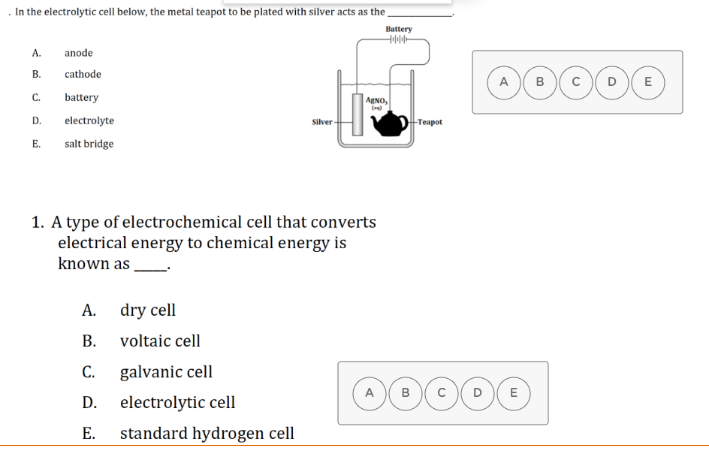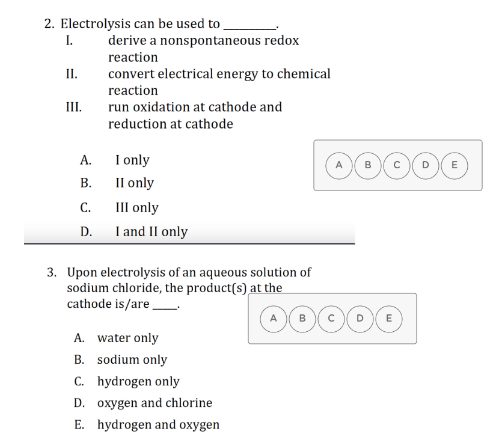2. Electrolysis can be used to I. derive a nonspontaneous redox reaction II. convert electrical energy to chemical reaction II. run oxidation at cathode and reduction at cathode I only Il only III only I and Il only А. B D E В. C. D.
Science behind corrosion-test
Corrosion is defined as an activity that transforms refined metals into more chemically stable forms such as oxide, hydroxide, carbonate, or sulfide. It refers to the slow decomposition of things (typically metals); thanks to chemical and/or electrochemical reactions with their surroundings. Corrosion engineering is the science of preventing and controlling corrosion.
Corrosion
Corrosion is defined as an activity that transforms refined metals into more chemically stable forms such as oxide, hydroxide, carbonate, or sulfide. It refers to the slow decomposition of things (typically metals); thanks to chemical and/or electrochemical reactions with their surroundings. Corrosion engineering is the science of preventing and controlling corrosion.
please explain then give correct answer


Step by step
Solved in 3 steps









